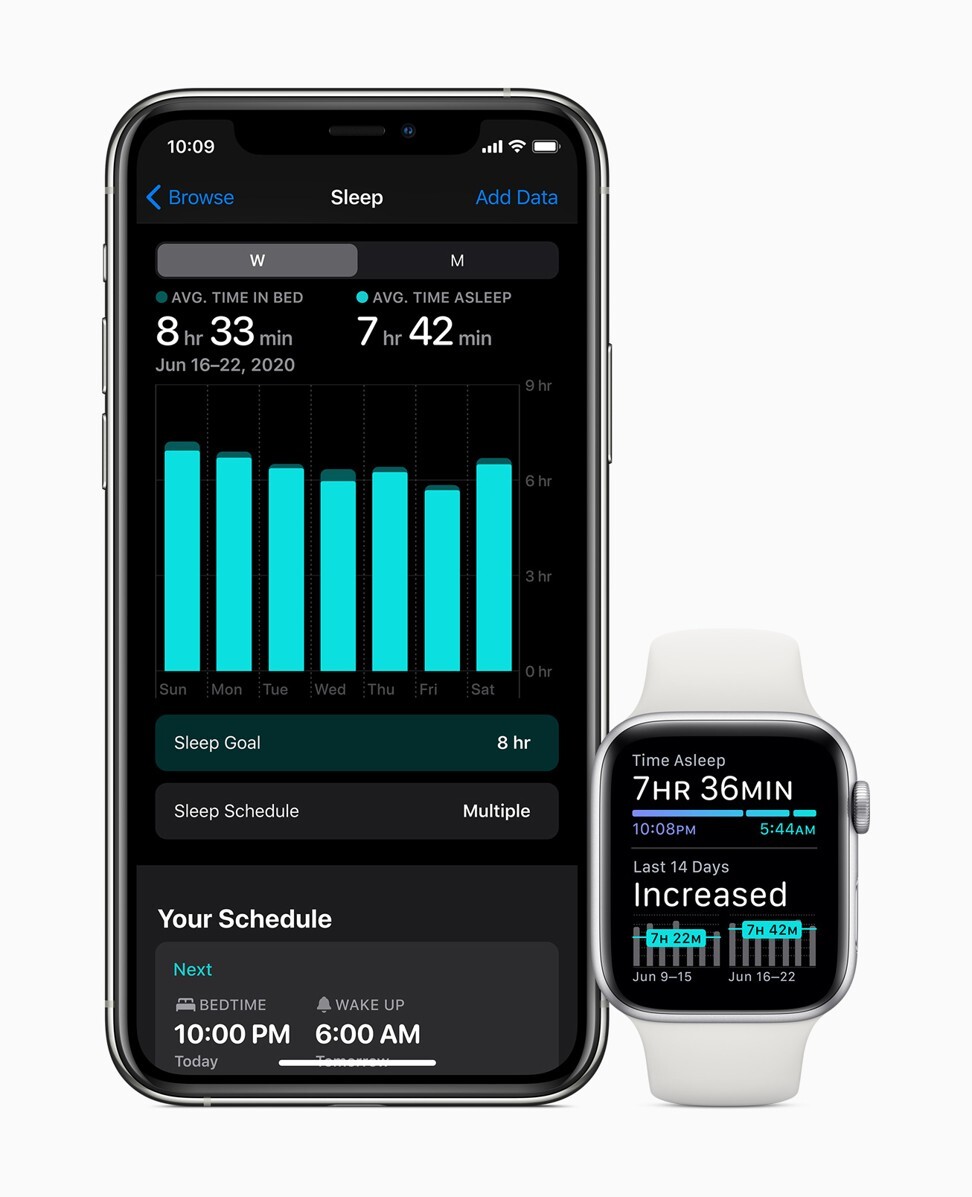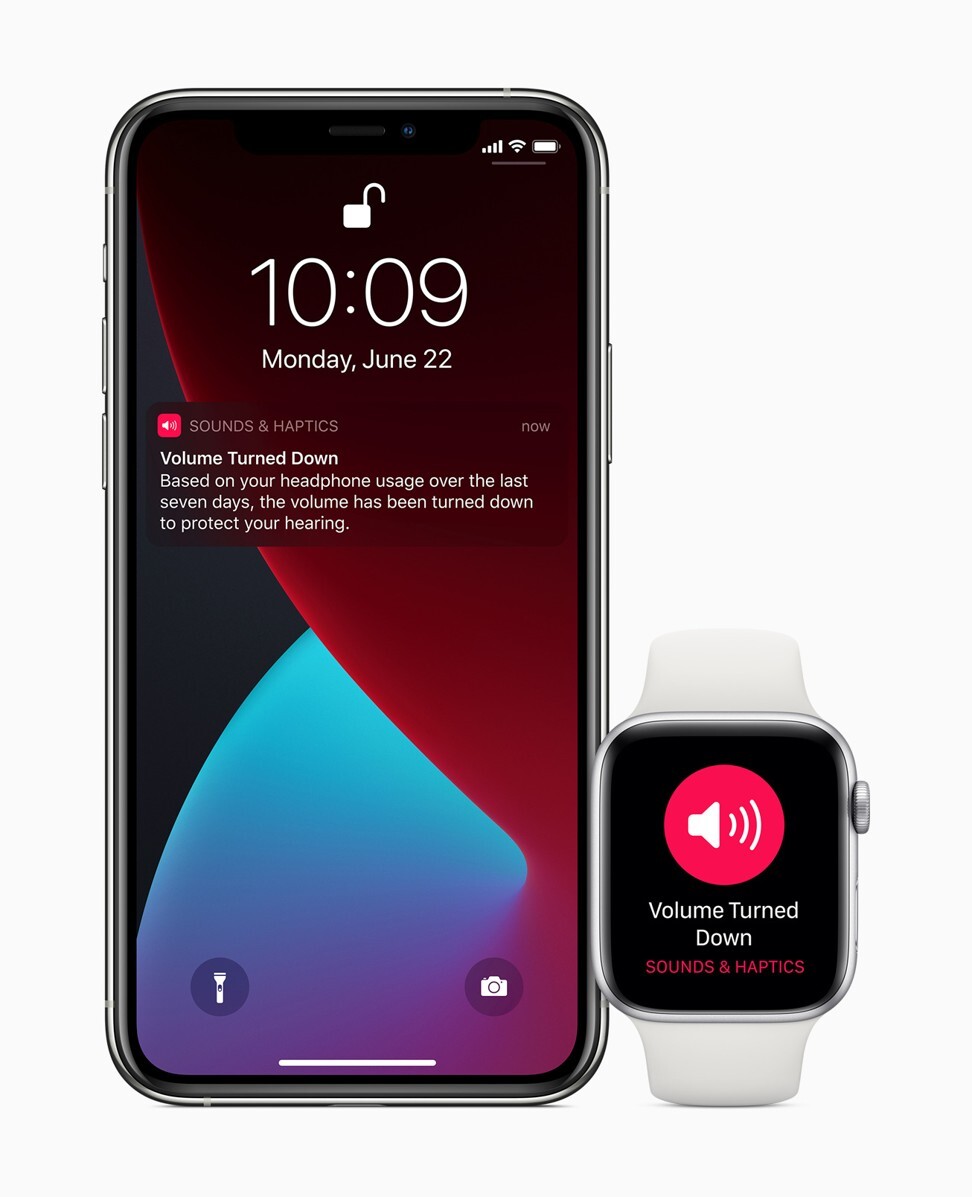
New on Apple Watch: a hand washing tracker, sleep detector, and audio volume ear protection feature
- The latest software updates for the Apple Watch includes several health features
- With the coronavirus pandemic in mind, the watch detects when you wash your hands, starts a 20-second timer, and tells you if you stop too soon

When Apple introduced its Watch in 2014, it was presented as a stylish fashion accessory that offered communication abilities. Media at the time covered it as a luxury item – there was a model priced at US$17,000.
In recent years, Apple has pivoted its marketing and pushed the Watch as first and foremost a health and fitness device, with key features introduced such as fall detection and electrocardiogram sensors.
This year’s new Apple Watch features, coming via a WatchOS 7 software update, continues the push in that direction. The most headline- grabbing and timely feature (given the ongoing Covid-19 pandemic) is automatic hand washing detection: when the wearer is washing their hands, the Watch will automatically detect the act and start a 20-second timer. If the hand washing stops before the timer ends, the Watch will nudge the wearer to clean their hands for longer.
Apple says the Watch tracks this by detecting hand motion, water splashes, and even using its mic to listen for “squishy sounds” made from rubbing soap. Apple also claims the algorithms will be smart enough to not be confused by the wearer swimming or by rain.

A long overdue addition is sleep tracking, which has been available on other wearables such as Fitbits for years. The Watch will use its heart rate sensor and accelerometer (the latter to detect micro movements) to identify when a user has fallen asleep.
As a long-time user of both Fitbit and Apple Watch, I can say the former’s sleep tracking is highly accurate, with in-depth analysis of sleep patterns and the number of times I wake up in the middle of the night. I have no doubt Apple’s implementation will be at least as good.

There’s also a new “Hearing” mode, that tracks the decibel level of audio playing through headphones or earbuds via iPhones or Apple Watch. The Watch will, essentially, notify users if they’re listening at unhealthy volumes that can damage hearing, and automatically dial down the volume.
Other noteworthy features include new Watch “faces” (the main default screen of the device) that can show more complications, including multiple complications from the same app. This, too, was made health-driven during Apple’s demo, showing a Watch face with multiple complications from the app Glow Baby, for new mothers to track their newborn’s feeding and nap schedules. Watch faces can now be custom-built by users and shared via download links or AirDrop.
While none of these features are as game changing as the electrocardiogram and irregular heart rate detection from last year, they further polish the Apple Watch as a do-it-all fitness tracker.

One concern I have is the sleep tracking’s impact on battery life: the Apple Watch requires at least 30 per cent battery or more to track sleep, implying it could use up to that much juice just to track a full night’s sleep. The Apple Watch’s battery life is already not great compared to other wearables – it needs charging at least once per day, with most users doing so overnight. I wonder how wearing the Watch all night (instead of leaving it on the charger) will further affect this.